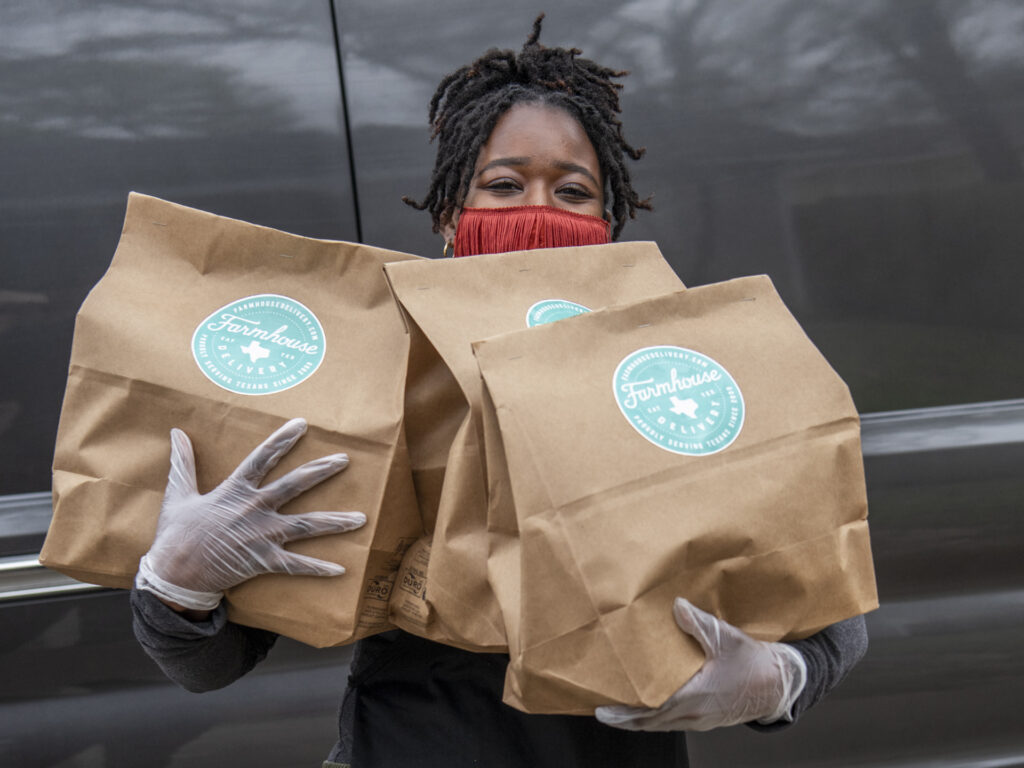3-minute read
In this letter: Our new report on diversity, equity, and inclusion for the Austin area workforce, and how we’re partnering with a local nonprofit to employ Austinites and feed families in need.
🙏 With gratitude: It was an honor to co-present at the Community Advancement Network’s “Expanding Opportunity” Regional Summit alongside Paul Fletcher, CEO at Workforce Solutions Rural Capital Area.
- Special thanks to our friends at Rural Cap for their continued partnership as we align our workforce development efforts to strengthen the Central Texas economy.
Were you forwarded this email? Sign up to receive my weekly updates here.
In partnership, Tamara.

1. New Report: Capital Area Workforce Diversity, Equity, and Inclusion
A new report from Workforce Solutions Capital Area details workforce diversity, equity, and inclusion (DEI) concerns in the Austin area.
Why it matters: People of color have been disproportionately impacted by unemployment, and this was exacerbated by the pandemic.
The big picture: In Texas, in the first quarter of 2021, while the unemployment rate was at 6.9%, Black unemployment was at 11.2% and Hispanic at 8.0%. Meanwhile, White unemployment was 4.9%, according to Economic Policy Institute.
Zoom in: In the Austin metro, in the latest data available for August 2021 from Burning Glass Labor Insight, when unemployment was 3.8% overall, Black unemployment was 6.0%, Hispanic at 4.1%, and White at 3.4%.
Yes, and: Our data also shows that 69% (or about 110,000 people) of the 158,000+ unemployment claimants in Travis County since March 2020 have less than an associate’s degree.
- These claimants are disproportionately black or Hispanic.
My takeaway: There’s a clear need to find what services and training programs career seekers need to connect diverse populations into in-demand, high-paying jobs. From here, we must intentionally recruit individuals for post-secondary training and bring our community together to ensure quality jobs are available and employers are hiring for skills derived from lived experiences in addition to traditional education.
- High-skill workers in our region’s most in-demand sectors have enjoyed a wealth of job opportunities and financial gains, even amid COVID. But these advantages have not been experienced by everyone in our community, particularly those who have lower income and less education.
- So that everyone can compete in Austin’s labor market, WFS is behind the Hire Local Plan (the next version of the Austin metro Community Workforce Plan). Its goalis to improve economically disadvantaged residents’ access to better economic opportunities through skills training.
- We’re gathering feedback from the community to ensure the plan is inclusive and collaborative and meets our goals.
By the numbers: Although there’s much work to be done to address DEI in our workforce,WFS has seen success with equitable outcomes for our training programs. According to 2016–2018 program data:
- $15,000+ (or approx. $7/hr): That’s the average annual wage increase for an adult completer of our Current Workforce Training (where 88% of clients served were people of color). The average wage after exit is $32,324.
- This program is designed for adults who are low income or laid off to enable them to enter the workforce at a self-sufficient wage.
- $6,700+: That’s the average annual wage increase or a youth completer of our Emerging Workforce Training (where 90% served are people of color).
- This program is designed to assist in-school, at-risk youth ages 16-24 with barriers in obtaining their high school diploma/GED and entering post-secondary education or the workforce.
Here are a couple of processes that executives can put in place to ensure inclusivity for underserved employees:
- Upskilling: If individuals don’t have the means for post-secondary training, upskilling in their organization provides the bridge to higher skills and higher earnings.
- Connect with Workforce Solutions: An example of our role as the Austin area talent hub is our partnership with Tesla. We’re pre-vetting career seekers to ensure they’re meeting the workforce needs and connecting qualified workers of all backgrounds to immediate opportunities with committed local employers.

2. Partnering with Saffron Trust Women’s Foundation to employ Austinites and feed families in need
In September 2020, Workforce Solutions began participating in the federal Disaster Relief Temporary Employment (DRTE) program to assist residents who had lost their jobs due to the pandemic.
Why it matters: DRTE provides dedicated funds to cities and states to help respond to the pandemic recovery effort. These funds help offset payroll costs for organizations doing humanitarian work related directly to the pandemic.
By the numbers:
- $1,145,890: That’s the combined total in wages that 98 Central Texans who participated in the DRTE program have earned over the past 12 months.
- 21 participants have found full-time employment, and another 43 are still participating.
- 16 organizations have participated in DRTE, with 12 still active.
What they’re saying: One participating organization is Saffron Trust Women’s Foundation, which delivers food to families in need. Since joining DRTE in January, Saffron Trust has had 24 participants who have earned a combined $308,000 in wages.
- Phyllis Everette, founder of Saffron Trust: “Our partnership with Workforce Solutions allowed us to boost economic opportunity for the families in a time of national crisis.”
- Read more about Phyllis’ journey with WFS on our blog.

